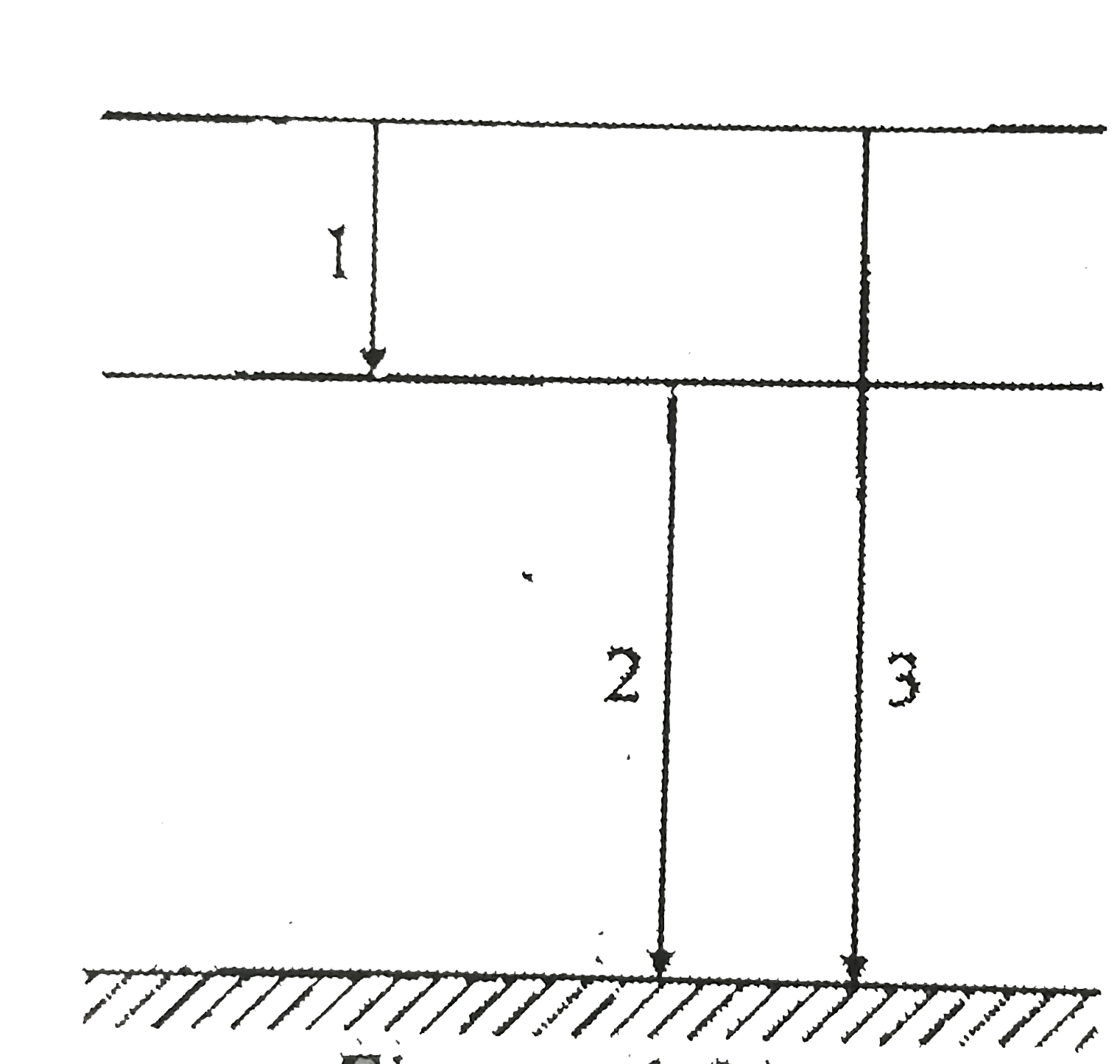Hydrogen (_(1)H1) Deuterium (_(1)H2) singly omised helium (_(1)He1) and doubly ionised lithium (_(1)Li6)++ all have one electron around the nucleus Consider an electron transition from n=2→n=1 if the wavelength of emitted radiartion are λ1,λ2,λ3,andλ4, repectivelly then approximetely which one of the following is correct ?
λ1=λ2=4λ3=9λ4
λ1=2λ2=3λ3=4λ4
4λ1=2λ2=2λ3=λ4
λ1=2λ2=2λ3=λ4
The correct Answer is:A
In Bohr model 1λ=Rz2[1n21−1n22]⇒z∝1z2
λ1:λ2:λ3:λ4::11:11:14:19
⇒λ1=λ2=4λ3=9λ4
Topper's Solved these Questions
- SIMPLE HARMONIC MOTIONBOOK - ALLENCHAPTER - SIMPLE HARMONIC MOTIONEXERCISE - Exercise-05(B)
46 Videos
- SIMPLE HARMONIC MOTIONBOOK - ALLENCHAPTER - SIMPLE HARMONIC MOTIONEXERCISE - MCQ s
8 Videos
- SIMPLE HARMONIC MOTIONBOOK - ALLENCHAPTER - SIMPLE HARMONIC MOTIONEXERCISE - Exercise - 04[A]
25 Videos
- RACEBOOK - ALLENCHAPTER - RACEEXERCISE - Basic Maths (Wave Motion & Dopplers Effect) (Stationary waves & doppler effect, beats)
25 Videos
- TEST PAPERBOOK - ALLENCHAPTER - TEST PAPEREXERCISE - PHYSICS
4 Videos
Similar Questions
Hydrogen H, deuterium D, singlyionized helium He+ and doubly ionized lithium L++ all have one electron around the nucleus. Consider n=2 and n=1 transition. Thewavelengths ofthe emitted radiations are λ1,λ2,λ3andλ4 respectively. Then approximately:
View SolutionThe wavelengths and frequencies of photons in transition 1,2 and 3 for hydrogen like atom are λ1,λ2,λ3,v1,v2 and v3 respectively. Then:

View Solution
Knowledge Check
Hydrogen (.1H1), Deuterum (.1H2), singly ionised Hellium (.2He4)+ and doubly ionised lithium (.3Li6)++ all have one electron around the nucleus. Consider an electron tranition from n=2 to n=1. If the wave lengths of emitted radiation are λ1,λ2,λ3 and λ4 respectively then approximately which one of the follwing is correct ?
A4λ1=2λ2=2λ3=λ4Bλ1=2λ2=2λ3=λ2Cλ1=λ2=4λ3=9λ4Dλ1=2λ1=3λ3=4λ2Hydrogen (H), deuterium (D), singly ionized helium (He+) and doubly ionized lithium (Li) all have one electron around the nucleus. Consider n=2 to n=1 transition. The wavelength of emitted radiations are λ1,λ2,λ3 and λ4 respectively. then approximately
Aλ1=λ2=4λ3=9λ4B4λ1=2λ2=2λ3=λ4Cλ1=2λ2=2√2λ3=3√2λ4Dλ1=λ2=2λ3=3√2λ4Hydrogen (H), deuterium (D), singly ionized helium (He+) and doubly ionized lithium (Li) all have one electron around the nucleus. Consider n=2 to n=1 transition. The wavelength of emitted radiations are λ1,λ2,λ3 and λ4 respectively. then approximately
Aλ1=λ2=4λ3=9λ4B4λ1=λ2=2λ3=λ4Cλ1=2λ2=2√2λ3=3√2λ4Dλ1=λ2=2λ3=3s√2λ4
For the given transitions of electron, obtain the relation between λ1,λ2&λ3.
View SolutionWhen an electron makes transition from (n+1)state to n state the wavelength of emitted radiations is related to n (n>>>1) according to λ∝nx.
What is the value of x ?
View Solutionयदि बिंदुएँ (2λ,2λ+2), (3,2λ+1) तथा (1,λ+1) संरेखीय हैं, तो λका मान ज्ञात करो ?
View SolutionThe wavelength of electron waves in two orbits (λ1:λ2)
View SolutionThe wavelengths of photons emitted by electron transition between two similar leveis in H and He+ are λ1 and λ2 respectively. Then :-
View Solution